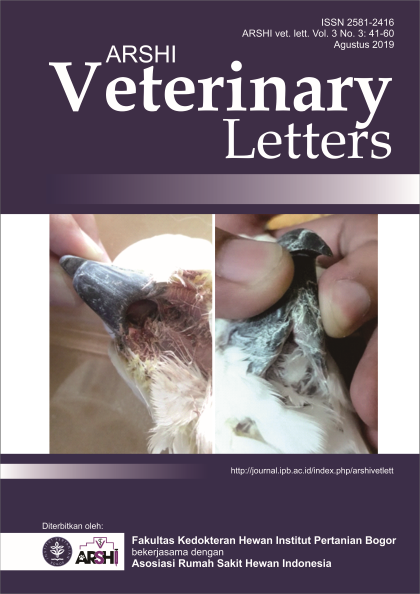Animal model of diabetic keratopathy
Abstract
Diabetic keratopathy is one of the most common ocular complications in diabetes mellitus. Protocol for diabetes induction in rat model also has been established in many centers. Nonetheless, method in developing diabetic keratopathy rat model has not been well covered. Streptozotocin (STZ) -induced diabetes is widely being used as animal diabetic model. The purpose of this study is to obtain an animal model of diabetic keratopathy that can be used to study the morphology, metabolism, and function of cornea in cases where human samples can be difficult to obtain. A single dose STZ (50 mg/kg) was injected intraperitoneally to control and intervention group. Plasma glucose level concentrations were tested in day 3 postinjections. Obtained animal model of diabetic keratopathy, with significant difference of blood glucose level between intervention and control group (P<0.00). Sensibility of cornea was decreased by week 14th in intervention group. Epithelial defect were more prominent in diabetic group. Despite the differences between human and animal characteristic of diabetic keratopathy, the use of animal models has contributed to better understanding of this disease and to examine more effective treatment.Downloads
References
Bikbova G, Oshitari T, Baba T, Yamamoto S. 2016. Neuronal changes in the diabetic cornea: perspectives for neuroprotection. BioMed Research International. 2016:1-8.
Cousen P, Cackett P, Bennett H, Swa K, Dhillon B. 2007. Tear production and corneal sensitivity in diabetes. Journal of Diabetes and its Complications. 21(6):371-373.
Furman BL. 2015.Streptozotocin‐induced diabetic models in mice and rats. Current Protocols in Pharmacology. 70(1):5-47.
King AJ. 2012. The use of animal models in diabetes research. British Journal of Pharmacology. 166(3):877-894.
Ljubimov AV. 2017. Diabetic complications in the cornea. Vision Research. 139:138-152.
Vieira-Potter VJ, Karamichos D, Lee DJ. 2016. Ocular complications of diabetes and therapeutic approaches. BioMed Research International. 2016: 1-14.
Wild S, Roglic G, Green A, Sicree R, King H. 2004. Global prevalence of diabetes: estimates for the year 2000 and projections for 2030. Diabetes Care. 27(5):1047-1053.
Yin J, Huang J, Chen C, Gao N, Wang F, Fu-Shin XY. 2011. Corneal complications in streptozocin-induced type I diabetic rats. Investigative Ophthalmology & Visual Science. 52(9):6589-6596.
Copyright (c) 2019 CC-BY-SA

This work is licensed under a Creative Commons Attribution-ShareAlike 4.0 International License.
Authors who publish with this journal agree to the following terms:
1. Authors retain copyright and grant the journal right of first publication with the work simultaneously licensed under a Creative Commons Attribution License that allows others to share the work with an acknowledgement of the work's authorship and initial publication in this journal.
2. Authors are able to enter into separate, additional contractual arrangements for the non-exclusive distribution of the journal's published version of the work (e.g., post it to an institutional repository or publish it in a book), with an acknowledgement of its initial publication in this journal.
3. Authors are permitted and encouraged to post their work online (e.g., in institutional repositories or on their website) prior to and during the submission process, as it can lead to productive exchanges, as well as earlier and greater citation of published work (See The Effect of Open Access).


.jpg)















